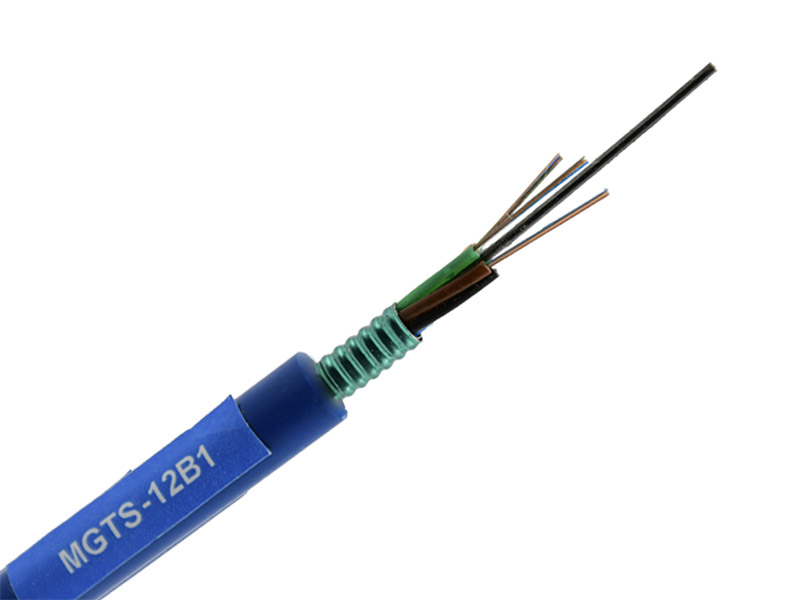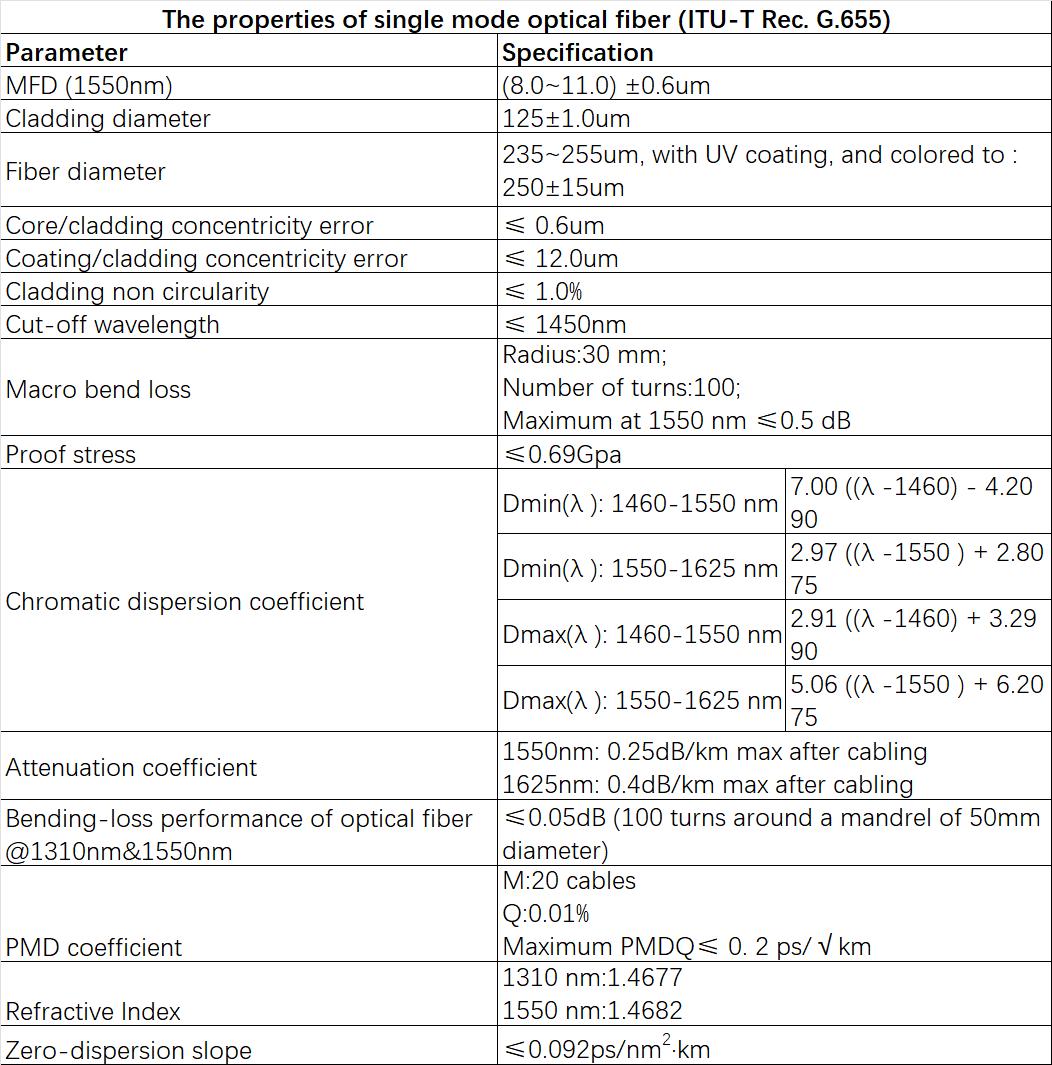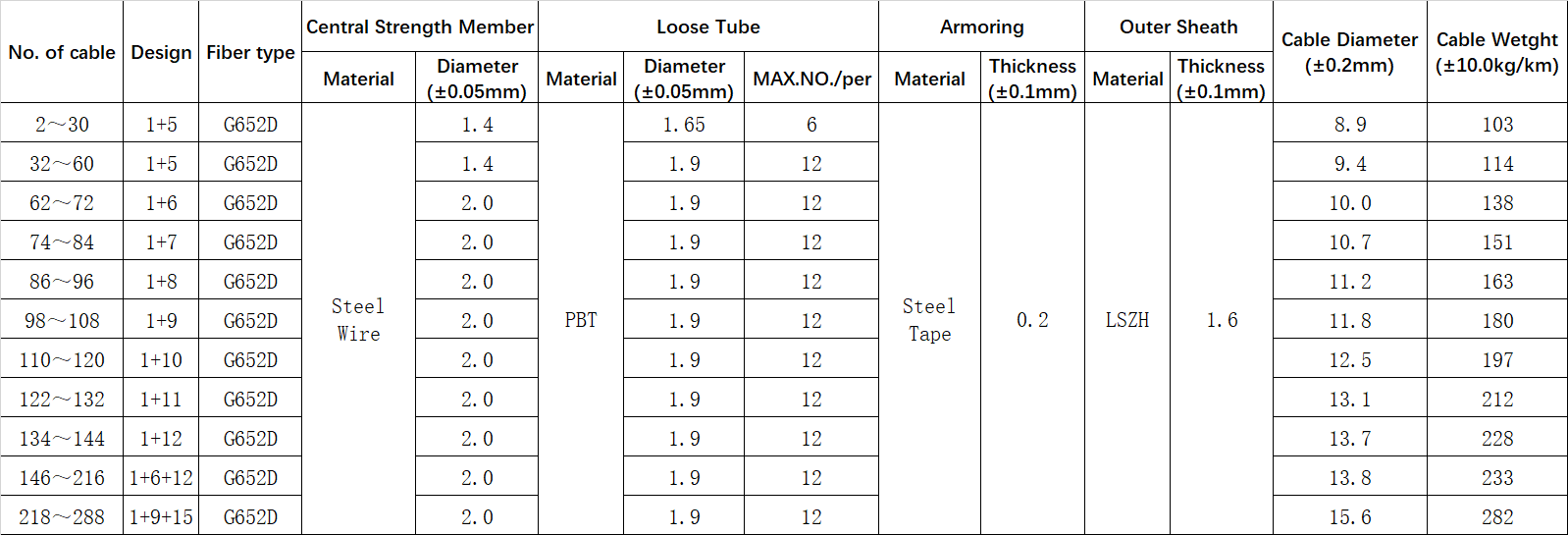
Standard mine flame-retardant optical cable is to put the optical fiber into a bundle tube made of high-modulus plastic, and the tube is filled with water-blocking compound. The center is reinforced with steel wire, and the steel-CMR bonding strengthens the outer sheath. The space between the production middle tube and the sheath is filled with high-density water-blocking non-woven fabric or water-blocking ointment.
Standard:Comply with stand MT/T 386-2011 as well as Q/AZH1-20109-2019.
Temperature Range:Storage and operation::-40C ~ +70C;Erection:-15C ~ +60C
Bend radius:Static 10 times the cable diameter,Dynamic 20 times optical cable diameter
Application:Use strictly in accordance with relevant regulations on coal mine safety
Fiber Type:G652D;G655C;G657A1;G657A2;50/125;62.5/125;OM3-150;OM3-300;OM4 As Options

1、Full-section water-blocking structure, double-sided coated steel strip longitudinal wrapping to ensure good water-blocking performance and lateral pressure resistance
2、The loose tube is filled with special grease to provide critical protection for the optical fiber.
3、Phosphated steel wire center reinforcement component has high modulus and corrosion resistance
4、CMR sheath makes the optical cable have good flame retardant properties
5、Product service life is more than 25 years
Optical Fiber Colors:



1. Why install optical cables?
At coal mine operation sites, due to terrain restrictions and difficult construction, wireless communication is generally used. However, its signals are subject to large electromagnetic interference, and the reliability of signals and communications cannot be guaranteed. In comparison, optical cable communication signals have low interference, good anti-interference performance, large bandwidth, fast speed, safety and reliability. Therefore, it is highly necessary to install optical cables in coal mine operations.
2. Types and technical requirements of optical cables
Currently, there are two types of optical cables used in coal mine shafts: single-mode optical cables and multi-mode optical cables. When selecting optical cables, you need to select a suitable optical cable based on the underground environment and the required communication distance. At the same time, there are many technical requirements for optical cables, such as the voltage resistance, tensile strength, optical transmission performance, etc. of the optical cable. These technical requirements need to be considered when purchasing and installing fiber optic cables.
3. Installation location and wiring method
The installation location and wiring method of optical cables have a great impact on the quality and reliability of underground communications. In order to reduce damage to optical cables during transportation, installation, and use, it is necessary to choose a safe and reliable installation location and a reasonable wiring method. Generally speaking, optical cables can be installed on the shaft walls, derricks, shafts, etc. of shafts, or they can be installed by laying optical cable troughs. The wiring method needs to comply with technical requirements such as bending radius and longitudinal compression.
4. Protection of optical cables
Optical cables also need to be protected during use to reduce damage and maintenance costs. Generally speaking, there are two main ways to protect optical cables: one is to use a protective tube, in which the optical cable is placed in the protective tube and fixed with anchors. The other is to directly use the well wall for protection. When selecting protection measures, the reliability of the optical cable and the actual situation need to be considered comprehensively.
Standard length:2000m, other lengths are also available
Note: The structure’s size and specifications can be desianed according to customer requirements
